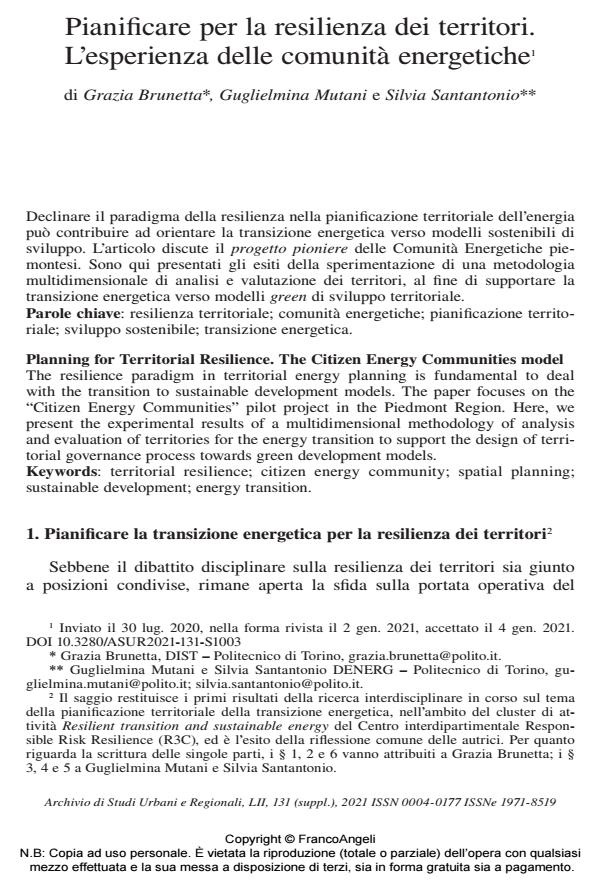Planning for Territorial Resilience. The Citizen Energy Communities model
Journal title ARCHIVIO DI STUDI URBANI E REGIONALI
Author/s Grazia Brunetta, Guglielmina Mutani, Silvia Santantonio
Publishing Year 2021 Issue 2021/suppl. 131
Language Italian Pages 27 P. 44-70 File size 274 KB
DOI 10.3280/ASUR2021-131-S1003
DOI is like a bar code for intellectual property: to have more infomation
click here
Below, you can see the article first page
If you want to buy this article in PDF format, you can do it, following the instructions to buy download credits

FrancoAngeli is member of Publishers International Linking Association, Inc (PILA), a not-for-profit association which run the CrossRef service enabling links to and from online scholarly content.
The resilience paradigm in territorial energy planning is fundamental to deal with the transi-tion to sustainable development models. The paper focuses on the "Citizen Energy Com-munities" pilot project in the Piedmont Region. Here, we present the experimental results of a multidimensional methodology of analysis and evaluation of territories for the energy transition to support the design of territorial governance process towards green develop-ment models.
Keywords: territorial resilience; citizen energy community; spatial planning; sustainable development; energy transition.
- Computational Science and Its Applications – ICCSA 2024 Workshops Becchio Cristina, Bottaccioli Lorenzo, Bottero Marta, Cavana Giulio, Fancello Giovanna, Sciullo Alessandro, pp.207 (ISBN:978-3-031-65307-0)
- Computational Science and Its Applications – ICCSA 2025 Workshops Alessandra Marra, Michele Grimaldi, Isidoro Fasolino, Monica M. L. Sebillo, pp.122 (ISBN:978-3-031-97662-9)
- New Metropolitan Perspectives Roberto Gerundo, Alessandra Marra, Michele Grimaldi, pp.2833 (ISBN:978-3-031-06824-9)
Grazia Brunetta, Guglielmina Mutani, Silvia Santantonio, Pianificare per la resilienza dei territori. L’esperienza delle comunità energetiche in "ARCHIVIO DI STUDI URBANI E REGIONALI" suppl. 131/2021, pp 44-70, DOI: 10.3280/ASUR2021-131-S1003